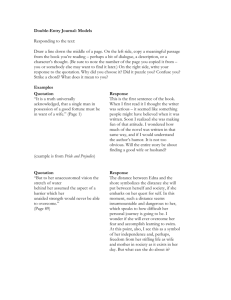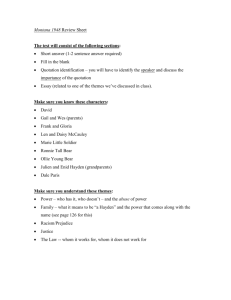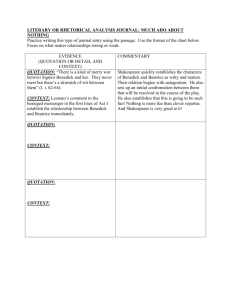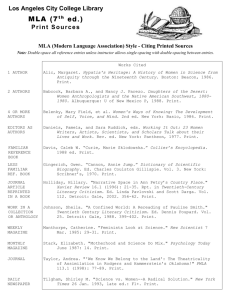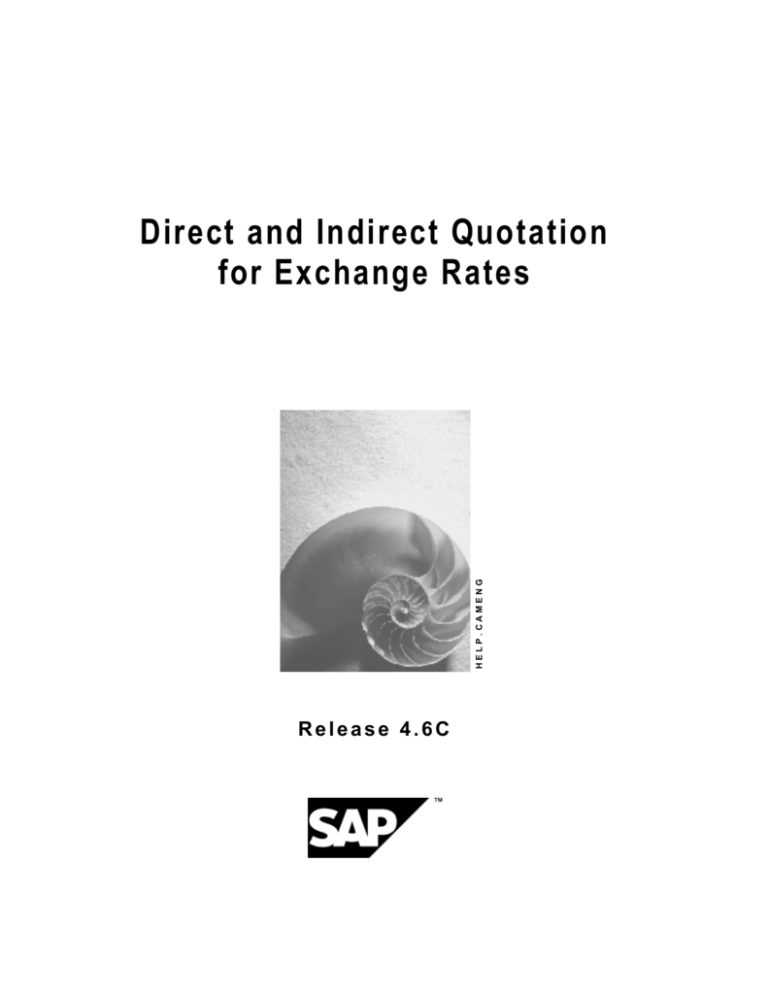
HELP.CAMENG
Direct and Indirect Quotation
for Exchange Rates
Release 4.6C
Direct and Indirect Quotation for Exchange Rates
SAP AG
Copyright
© Copyright 2001 SAP AG. All rights reserved.
No part of this publication may be reproduced or transmitted in any form or for any purpose
without the express permission of SAP AG. The information contained herein may be changed
without prior notice.
Some software products marketed by SAP AG and its distributors contain proprietary software
components of other software vendors.
®
®
®
®
®
®
®
Microsoft , WINDOWS , NT , EXCEL , Word , PowerPoint and SQL Server are registered
trademarks of
Microsoft Corporation.
®
®
®
®
®
®
®
®
®
IBM , DB2 , OS/2 , DB2/6000 , Parallel Sysplex , MVS/ESA , RS/6000 , AIX , S/390 ,
®
®
®
AS/400 , OS/390 , and OS/400 are registered trademarks of IBM Corporation.
®
ORACLE is a registered trademark of ORACLE Corporation.
®
®
INFORMIX -OnLine for SAP and Informix Dynamic Server
Informix Software Incorporated.
®
®
®
TM
are registered trademarks of
®
UNIX , X/Open , OSF/1 , and Motif are registered trademarks of the Open Group.
®
HTML, DHTML, XML, XHTML are trademarks or registered trademarks of W3C , World Wide
Web Consortium,
Massachusetts Institute of Technology.
®
JAVA is a registered trademark of Sun Microsystems, Inc.
®
JAVASCRIPT is a registered trademark of Sun Microsystems, Inc., used under license for
technology invented and implemented by Netscape.
SAP, SAP Logo, R/2, RIVA, R/3, ABAP, SAP ArchiveLink, SAP Business Workflow, WebFlow,
SAP EarlyWatch, BAPI, SAPPHIRE, Management Cockpit, mySAP.com Logo and mySAP.com
are trademarks or registered trademarks of SAP AG in Germany and in several other countries
all over the world. All other products mentioned are trademarks or registered trademarks of their
respective companies.
2
April 2001
SAP AG
Direct and Indirect Quotation for Exchange Rates
Icons
Icon
Meaning
Caution
Example
Note
Recommendation
Syntax
Tip
April 2001
3
Direct and Indirect Quotation for Exchange Rates
SAP AG
Contents
Direct and Indirect Quotation for Exchange Rates ..................................................... 5
4
April 2001
SAP AG
Direct and Indirect Quotation for Exchange Rates
Direct and Indirect Quotation for Exchange Rates
Direct and Indirect Quotation for Exchange Rates
Purpose
This component enables you to manage exchange rates for each currency pair using direct or
indirect quotation. The type of quotation used is dependent on the market standard. You can
define the type of quotation per client and currency pair (business transaction).
Indirect quotation has not been required until now, because direct quotation was usually used for
exchange rates. With the start of the dual currency phase of the European Monetary Union
(EMU), indirect quotation is now used within Europe for exchange rates with the euro. Indirect
quotation is also becoming more widely accepted internationally. Until now, there were many
limitations involved in processing indirect exchange rates.
Direct quotation is where the cost of one unit of foreign currency is given in units of local
currency, whereas indirect quotation is where the cost of one unit of local currency is given in
units of foreign currency.
Your local currency is EUR:
- Direct exchange rate: 1USD = 0.92819 EUR
- Indirect exchange rate: 1EUR = 1.08238 USD
The table for Maintaining exchange rates (TCURR) has been redesigned so that you can enter
an exchange rate with either direct or indirect quotation. (Implementation Guide (IMG): General
Settings ® Currencies ® Enter exchange rates).
An extra column is provided for entering indirect exchange rates.
You have used direct quotation to define exchange rates up until now; the exchange rates are
specified with direct quotation for the to-currency (local currency/reference currency).
You had to maintain exchange rates, such as the euro, in the table for Exchange rate types for
currency translation (TCURV) so that indirect quotation could be used for calculations. The fields
Reference currency left and EMU conversion were selected for these exchange rate types. When
entering exchange rates manually in the applications, you still had to use direct quotation to enter
the exchange rates. The document display shows the direct exchange rate.
However, this concept cannot be extended to general exchange rate types.
Example
Previously:
Your local currency is EUR:
Exchange
rate type
Currency (from)
Currency (to)
Valid from
Exchange
rate
Translation ratio
M
USD
EUR
01.01.1999
92.81993
100:1
EURO
EUR
USD
01.01.1999
1.08238
1:1
April 2001
5
Direct and Indirect Quotation for Exchange Rates
SAP AG
Direct and Indirect Quotation for Exchange Rates
The first line shows a direct exchange rate USD – EUR; the local currency is the to-currency. 100
USD equal 92.81993 EUR.
The second line shows an indirect exchange rate EUR – USD; the local currency is the fromcurrency. 1EUR equals 1.08238USD.
Change:
Your local currency is EUR:
You can define the exchange rate for a currency pair using either direct or indirect quotation.
Valid from
Exchang
e rate
type
Indirect
X
quotation
Factor
(from)
=
Direct
X
quotation
Factor
(to)
Currency
(to)
Currenc
y (from)
M
01.01.1999
X
100
USD
=
92.81993 X
1
EUR
EURO
01.01.1999 1.08238
X
1
USD
=
X
1
EUR
Indirect exchange rates are always given with the local currency or reference currency as the tocurrency.
First line: Direct quotation is read from left to right, as before: 100 USD equal 92.81993 EUR.
Second line: Indirect quotation is read from right to left, because the local currency is always the
to-currency: 1 EUR equals 1.08238 USD.
Implementation Considerations
Integration
This function affects all applications that work with exchange rates.
Features
The distinction between direct and indirect quotation is made by means of a prefix on the user
interface. The following settings have been made in the standard system:
·
Direct quotation:
·
Indirect quotation: ' / '
' '
Direct exchange rates do not have a prefix.
Your local currency is EUR. You enter a business transaction in the transaction
currency USD. Until now, you had to use direct quotation to enter the exchange rate
(1USD =0.92819 EUR). If you have defined '/' as the prefix for indirect quotation, you
can also enter the exchange rate with indirect quotation (1 EUR = 1.08238 USD) by
entering '/1.08238' in the exchange rate field.
You can change the settings for the prefixes at any time.
6
April 2001
SAP AG
Direct and Indirect Quotation for Exchange Rates
Direct and Indirect Quotation for Exchange Rates
You can reduce the likelihood of errors being made by defining a prefix for both
forms of quotation, since the user is then forced to think about the correct form.
You can maintain your own settings in the Implementation Guide (IMG): General
Settings ® Currencies ® Set Indicators for Direct/Indirect Quotation Exchange
Rates.
·
Direct or indirect quotation can be maintained as the standard form of quotation for a certain
currency pair. You use:
- '1' for direct quotation
- '2' for indirect quotation
If a standard form of quotation has not been specified for a currency pair, the system
automatically uses direct quotation.
You make the settings in the IMG: General Settings ® Currencies ® Set Standard for
Direct/Indirect Quotation per Currency Pair.
·
If you do not make any settings of your own, the system uses the standard settings.
·
Indirect quotation can be used in the Industry Business Solutions (as of Release 4.5B/4.6A),
interfaces (BAPI, IDOC, user exits, etc.), and New Dimension products.
·
You must adapt your own batch inputs to the new exchange rates. The batch inputs provided
by SAP have already been adapted.
·
Indirect exchange rates are stored with a minus sign (-) at database level.
·
Indirect quotation is delivered with the standard system as of Release 4.6A. You can use the
extended function, or you can continue to work with direct quotation only.
Constraints
April 2001
7



